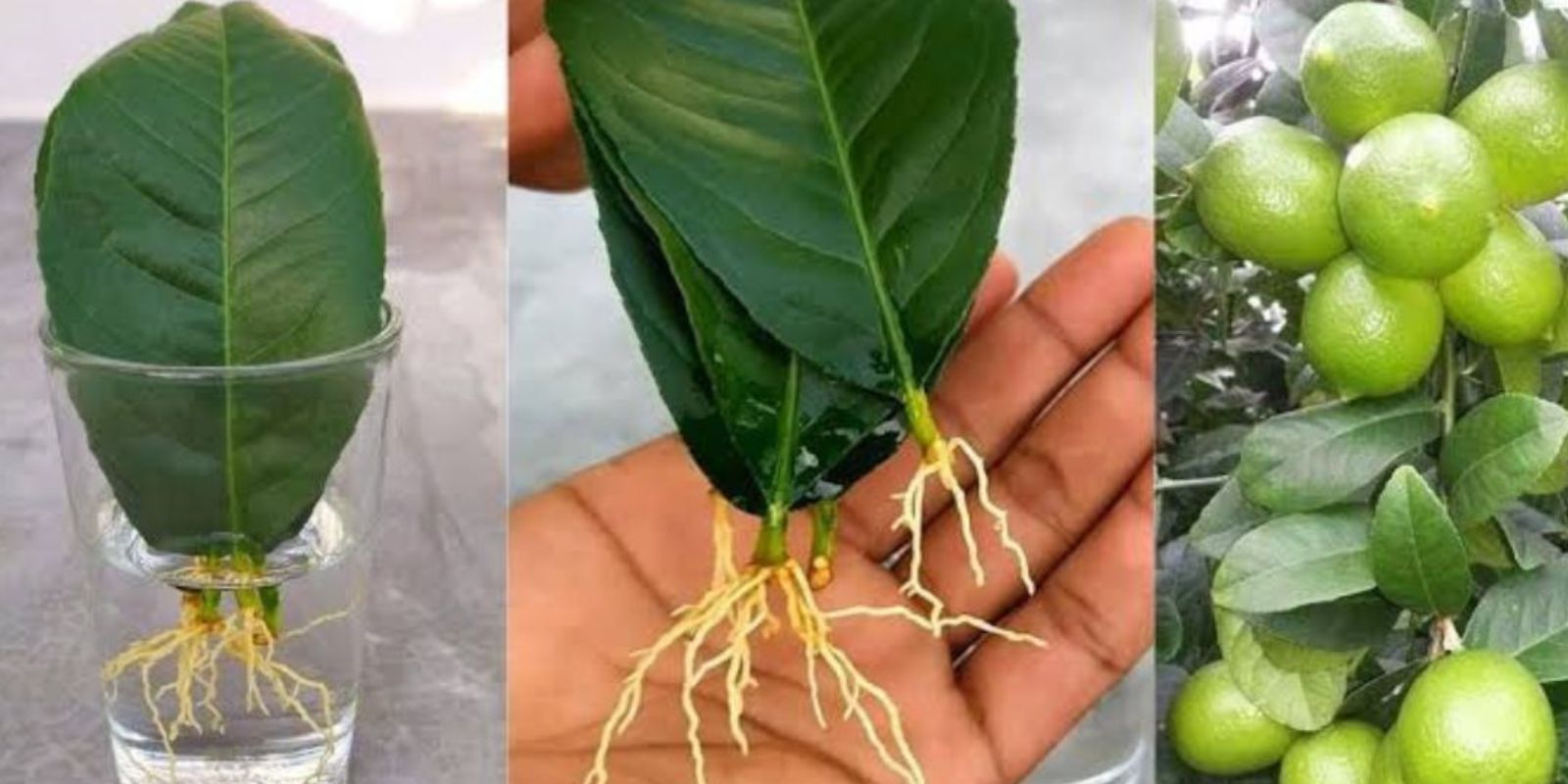Lemon trees are a symbol of freshness and vitality, often loved for their fragrant blossoms and juicy fruit. But did you know that you can propagate a lemon tree from just a leaf slice? This method is not only simple but also an efficient way to grow your citrus collection without spending a fortune. In this article, we’ll walk you through the step-by-step process of propagating lemons from leaf slices, complete with expert tips to ensure success.
Why Propagate Lemons from Leaf Slices?
Growing a lemon tree from seeds can be time-consuming and unpredictable. However, propagation from leaf slices allows you to replicate the exact genetic traits of the parent plant, ensuring consistent quality and health. Additionally, this method is faster, more reliable, and perfect for gardeners of all skill levels.
What You’ll Need
Before diving into the steps, gather the following materials:
- A healthy lemon tree.
- Sterilized scissors or a sharp knife.
- Rooting hormone (optional but recommended).
- A pot filled with a well-draining soil mix (coco peat and sand work well).
- A plastic bag or transparent container for creating a mini greenhouse.
- Water spray bottle.
Step-by-Step Guide to Propagate Lemons from Leaf Slices
1. Choose the Perfect Leaf
Select a mature, healthy leaf from the parent lemon tree. The leaf should be free of pests, diseases, or discoloration. Healthy leaves ensure that the propagation process begins with a strong foundation.
2. Cut the Leaf into Slices
Using sterilized scissors or a sharp knife, cut the leaf into 2-3 horizontal sections. Each section should include part of the leaf’s central vein, as this vein will serve as the base for new root growth.
3. Prepare the Rooting Medium
Fill a pot with a well-draining mix of coco peat and sand. This combination promotes aeration and moisture retention, creating the perfect environment for root development. Slightly moisten the mix before planting the slices.
4. Apply Rooting Hormone
To encourage faster and stronger root growth, dip the cut end of each leaf slice into rooting hormone powder or gel. While this step is optional, it significantly improves success rates.
5. Plant the Leaf Slices
Insert the slices vertically into the soil, ensuring the cut edge is buried while the top remains exposed. Space the slices evenly to allow proper air circulation and growth.
6. Create a Humid Environment
Cover the pot with a plastic bag or transparent container to trap humidity and warmth. This creates a mini greenhouse effect, which is essential for rooting. Ensure there’s some ventilation to prevent mold or fungal growth.
7. Place in Indirect Sunlight
Position the pot in a warm spot with plenty of indirect sunlight. Avoid direct sunlight, as it can overheat the soil and damage the delicate leaf slices.
8. Maintain Proper Moisture
Mist the soil lightly every few days to keep it moist but not waterlogged. Consistent moisture is crucial for root formation, but overwatering can lead to rot.
9. Wait for Roots to Develop
Patience is key! In 4-6 weeks, roots and tiny shoots should start to emerge from the base of the leaf slices. Once the roots are established, you can transplant the new plants into larger pots.
Care Tips for Young Lemon Plants
Once your lemon propagations have rooted, it’s essential to provide proper care to ensure they thrive:
- Sunlight: Gradually introduce the young plants to more sunlight, aiming for 6-8 hours daily.
- Watering: Water consistently but avoid overwatering. Allow the top inch of soil to dry out before watering again.
- Fertilization: Feed the plants with a balanced citrus fertilizer every 4-6 weeks to promote healthy growth.
- Pruning: Remove any weak or damaged leaves to direct energy toward healthy growth.
- Pest Control: Keep an eye out for common pests like aphids and scale. Use organic solutions like neem oil to protect your plants.
Common Mistakes to Avoid
- Using unhealthy leaves: Starting with damaged or diseased leaves reduces your chances of success.
- Overwatering: Excess moisture can lead to fungal infections and root rot.
- Skipping the greenhouse setup: High humidity is essential for root formation.
- Placing in direct sunlight: Intense sunlight can dry out the slices and prevent rooting.
- Neglecting hygiene: Always sterilize tools and pots to avoid the spread of diseases.
Why This Method Works
This propagation method works because leaf veins contain cells that can develop into roots when provided with the right conditions. The rooting hormone stimulates these cells to grow faster, while the humid environment prevents the slices from drying out.
Benefits of Propagating Lemons at Home
- Cost-Effective: Save money by creating new plants from your existing lemon tree.
- Eco-Friendly: Reduce waste and promote sustainability by reusing plant material.
- Personal Satisfaction: Watching a tiny slice transform into a thriving plant is incredibly rewarding.
- Genetic Consistency: Propagation ensures your new plants inherit the same traits as the parent tree, including fruit quality and flavor.
Frequently Asked Questions
Q: Can I use this method for other citrus trees?
A: Yes, this technique can be adapted for other citrus varieties, such as oranges and limes.
Q: How long does it take for the propagated plant to bear fruit?
A: Typically, propagated lemon plants take 3-5 years to mature and produce fruit.
Q: What if my leaf slices don’t root?
A: Check your process for any missteps, such as overwatering, insufficient humidity, or unhealthy leaves. Adjust accordingly and try again.
Conclusion
Propagating lemons from leaf slices is an innovative and straightforward way to expand your citrus collection. With just a little patience and care, you can enjoy the satisfaction of growing your own lemon trees at home. So why wait? Give this method a try and share your success stories with us! 🌱🍋
💬 Have you tried this method? Drop your tips or questions below! Don’t forget to share your progress with #LemonPropagation #CitrusLove #GreenThumbMagic.

